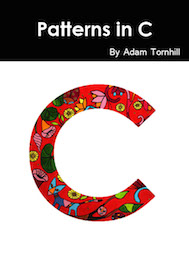Book Reviews
A Mind at Play: How Claude Shannon Invented the Information Age by Jimmy Soni and Rob Goodman
ISBN-13:
978-1476766683
Publisher:
Simon & Schuster
Pages:
384
Claude Shannon may not have the public name recognition of an Einstein or a Newton, but Shannon's ideas had just as profound impact on our modern world as his more well known scientific peers. During his career, Shannon invented the fundamentals concept for digital computers and developed the theory of communication that launched the whole field of information theory. While any of those innovations alone would have warranted a biography, Shannon didn't stop there; He also pioneered early AI through chess computers of his own design, an electromechanical mouse that solved mazes, and what was arguably the world's first wearable computer. Shannon's main work has been described in other best sellers like The Information and The Innovators, but this is the first biography to capture all those other sides of Claude Shannon. It's a story well-worth telling, and Jimmy Soni and Rob Goodman have written a beautiful portrait of a fascinating mind.
Many good ideas and innovations look strikingly obvious in retrospect. The main reason is because it's hard for a human mind to ignore what we know today. However, that doesn't mean the idea was obvious at its time. A perfect example on this is when Shannon made the connection between simple switches and boolean algebra. Before Shannon, computers were analog constructions built ad hoc of finely engineered shafts and gears. Programming
such a beast was a process of trial and error mastered by few (yes, that sure reminds of build systems for modern day web applications). By proving that all logical operators of Boole's algebra could be replicated with binary switches, Shannon massively simplified future generations of computers. Circuit construction now had mathematical rigor to it.
Fascinating enough, Shannon's work on logical circuits was part of his master thesis. After that Shannon joined a genetics lab to work on his dissertation. In a story that forecasts Shannon's work in other fields, he never published his dissertation on genetics and filed away the work. Half a century later as the time came to publish Shannon's collected papers, an expert in modern population genetics remarked that Shannon's dissertation would have changed the history of the subject substantially
would it have been published. This is a trait that seems to have followed Shannon throughout his life: start to work on a significant scientific question, get some groundbreaking insights, write it up, but stop short of publishing the work. The authors portrait of a curious man, characterized by constant play and creativity, gives some insights and explanations. As a reader, you're left with the impression that Shannon explored scientific questions mainly to answer his own curiosity. Once he had learned enough he simply moved on, be it to the mathematics of juggling (unpublished), his tinkering with electronic devices, or his work on customized unicycles.
Fortunately, his best known paper A Mathematical Theory of Communication received a better treatment and got published back in 1948. In this paper, Shannon turned information into a mathematical unit that can be measured and manipulated. Up until Shannon's information theory, noise had been a constant problem for long distance communication. Now Shannon showed that not only was it possible to send messages with perfect accuracy; It was also quite simple. Again, this is an idea we take for granted today, but Shannon was the first to demonstrate how any message could be encoded using binary numbers and, depending on the compression algorithm, achieve different qualities.
But Claude Shannon's work was about much more than information theory, and this review has barely scratched the surface. In fact, the biggest surprise to me as a I read this biography was how wide-ranging and deep Shannon's different interests and hobbies were. For example, there's this great story of how Shannon played a friendly game with the world chess champion Mikhail Botvinnik and managed to win a favorable exchange. Against a world champion! In this book we get to hear all those stories, learn about Shannon's work on some of the worlds first chess computers and wearables, together with clear explanations of his better known work on information theory. This is a wonderful biography and I highly recommend this inspiring read.
Reviewed July 2017






